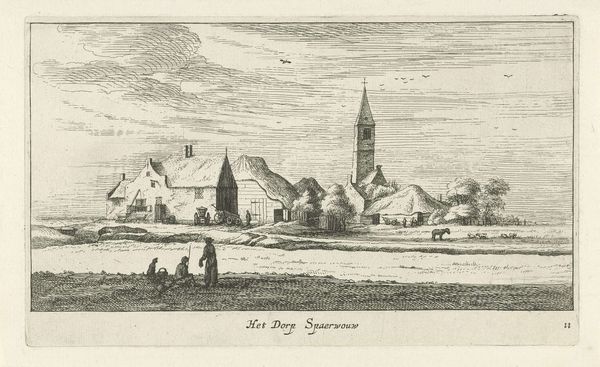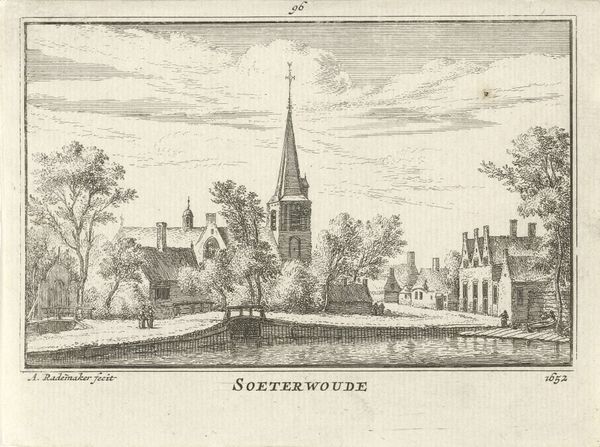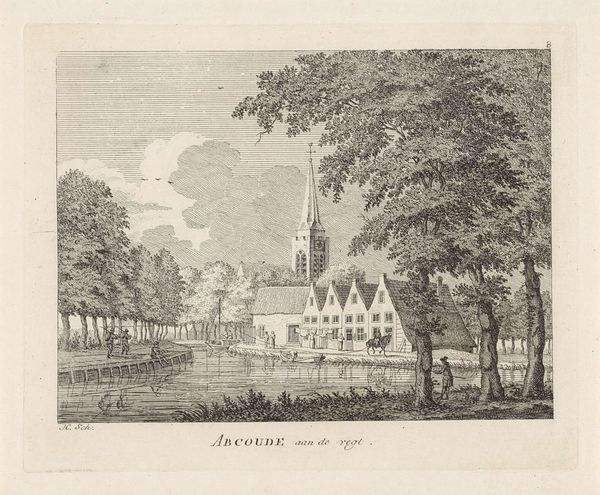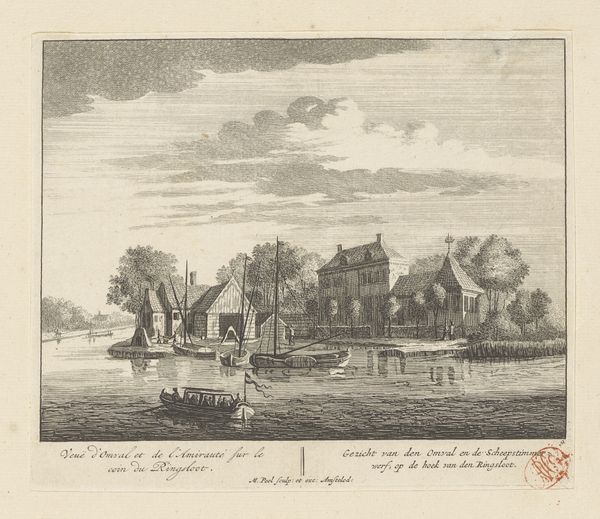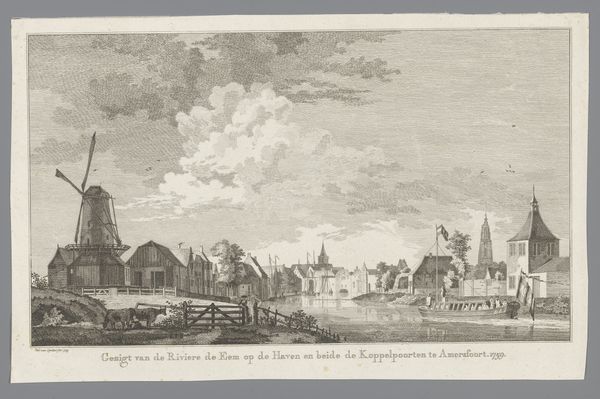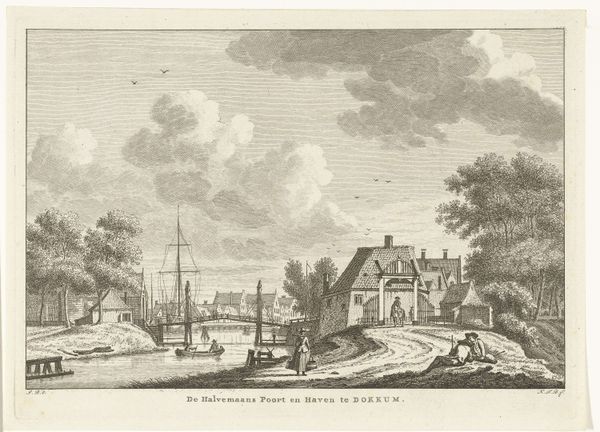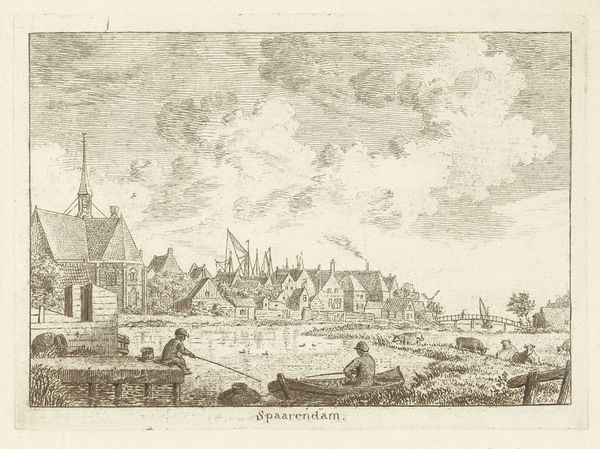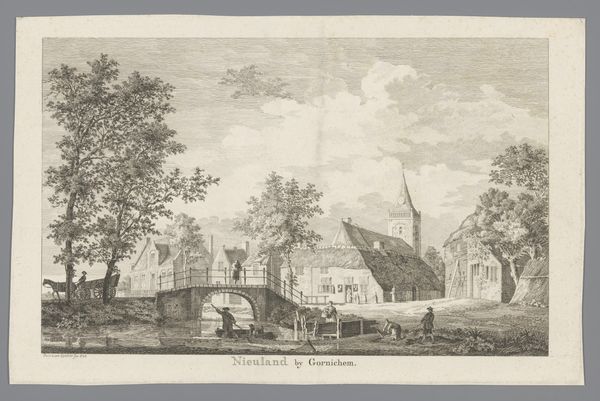
drawing, print, engraving
#
drawing
#
dutch-golden-age
# print
#
old engraving style
#
landscape
#
cityscape
#
engraving
Dimensions: height 80 mm, width 100 mm
Copyright: Rijks Museum: Open Domain
Curator: This engraving, entitled "Gezicht op Zonnemaire," or "View of Zonnemaire" dates to 1754 and is the work of Hendrik Spilman. It captures a serene cityscape in the Netherlands. Editor: My first thought is that it's a picture postcard from the past! The level of detail, even in monochrome, is remarkable; there's a sense of quiet contentment hanging in the air. It really does feel like I'm peering through time. Curator: That’s beautifully put. Look closely, and you'll notice how Spilman has deployed linear perspective to draw the eye deep into the village. Note also how the church steeple pierces the clouds – a symbol of divine presence grounding everyday life. Editor: Absolutely, and the steeple juxtaposes the huge cumulus nimbus – this could speak of temporal, cultural tensions with progress, new thoughts, and social shifts during this time in Dutch History. It’s more than just topography; it feels like Spilman is quietly revealing something about the psyche of the place. Curator: Indeed. Cityscapes during the Dutch Golden Age, when this engraving was created, served to both celebrate and document civic pride and identity. Each house, tree, and person contributes to the collective portrait of Zonnemaire. There is, undoubtedly, social commentary here. Editor: What’s compelling is the contrast between the manicured neatness on one side and the loose foliage that seems to soften the transition with its surroundings. A conscious choice that infuses both spontaneity and a grounding natural element to balance this sense of self importance you describe. It saves it, to me, from becoming cold or simply architectural. Curator: Precisely. Spilman understands how a built environment both reflects and shapes its inhabitants. The symbolism of a town’s layout can echo social structures and collective beliefs, too. Even seemingly simple design choices resonate over decades, carrying cultural memory. Editor: It's interesting to contemplate how, in centuries to come, our images—selfies, social media posts—will be viewed and analyzed. I suspect Spilman, like many artists, never fully knew the weight his work would eventually carry. Curator: A legacy, I believe, etched as much in the human spirit as in the lines of the plate. Editor: True. It’s a poignant reminder that art captures far more than just what we see.
Comments
No comments
Be the first to comment and join the conversation on the ultimate creative platform.

